After an amputation, one of the most common issues people face is swelling in the residual limb. It can be frustrating, uncomfortable, and even painful. Swelling doesn’t just make healing slower — it can also affect how well your prosthetic fits later. That’s why it’s so important to take it seriously from the very beginning.
At Robobionics, we’ve worked closely with people during every stage of their recovery. We’ve seen what works, what doesn’t, and what really helps people feel better and move forward. We know this journey is not just physical — it’s emotional too. So in this guide, we won’t just tell you what to do. We’ll explain why it matters and how it helps, in plain and simple language.
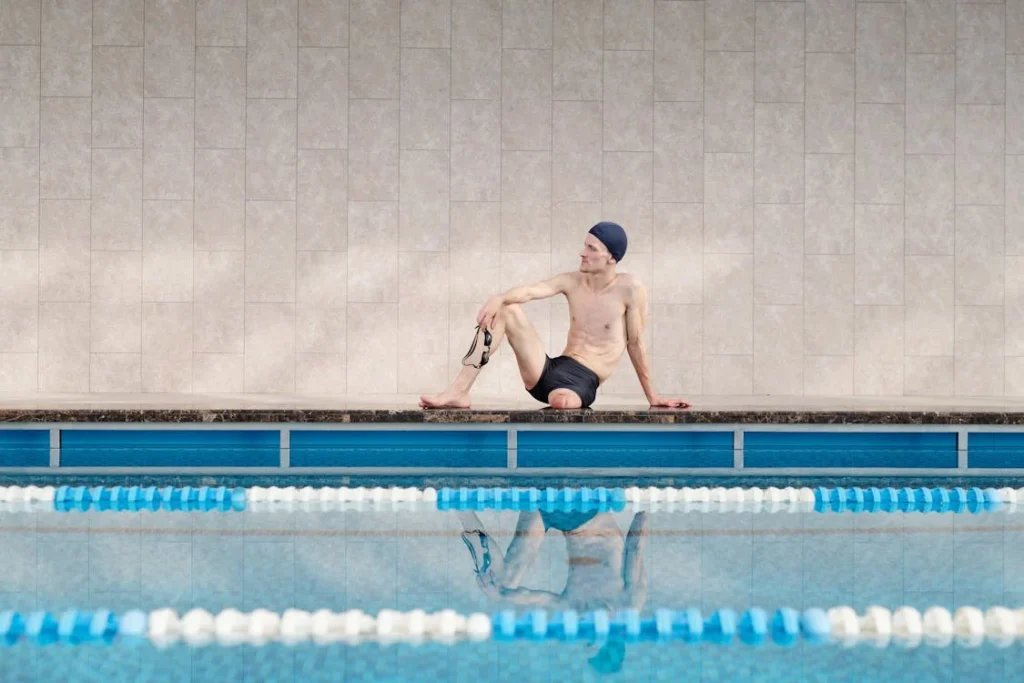
Understanding Swelling After Amputation
Why Swelling Happens in the First Place
Swelling — also called edema — is your body’s natural response to injury or surgery. After an amputation, your body sends extra blood and fluid to the area to help begin the healing process.
Think of it as your body trying to protect the area and repair it.
But sometimes, this protective response goes too far. The fluid builds up and doesn’t drain properly. That’s when the residual limb starts to feel puffy, tight, and sometimes painful.
You might notice your bandages feel tighter than usual, or your skin looks shiny. These are signs the swelling needs attention.
The tricky part is that some swelling is normal. In fact, it’s expected. The goal isn’t to make it disappear completely, but to manage it so that healing can continue smoothly and comfortably.
If swelling isn’t controlled, it can lead to problems. It may delay wound healing, cause pain, or make it hard to wear a prosthetic later.
In some cases, long-term swelling can even lead to skin issues or infection. That’s why learning to manage it early on is so important.
The First Few Days: What to Expect
In the first few days after surgery, swelling usually peaks. This is when your body is in overdrive, trying to seal the wound and start repairing tissues.
You might see a lot of fluid, redness, or puffiness in the residual limb. That’s normal, but it should start settling down within a week or two if things are going well.
Your medical team will likely have you wear compression dressings right after surgery. These help control the swelling and guide your limb into the proper shape for prosthetic use.
These dressings may feel snug, and that’s on purpose. They’re designed to apply gentle pressure that keeps fluid from building up too much in one place.
But dressings can only do so much. How you rest, move, and take care of your body in the early days plays a huge role in how quickly the swelling goes down.
You may feel like you need to stay in bed all day. But actually, a little movement — even just shifting your position or sitting up — can help your circulation.
When you lie still for too long, fluid tends to pool in your lower body, making swelling worse.
Your body needs balance: rest, but not too much. Movement, but not too fast. That balance is key.
How Your Body Drains Fluid
To understand how to reduce swelling, it helps to know how your body clears fluid in the first place.
Your blood vessels carry blood through your body, but when fluid leaks out of those vessels (which is what happens during healing), another system has to step in — your lymphatic system.
This system acts like a drainage system, moving extra fluid and waste out of your tissues and back into your bloodstream.
But the lymphatic system doesn’t have a pump like your heart. It relies on muscle movement and gentle pressure to push the fluid along.
That’s why things like light exercise, compression, and massage can help so much — they keep the lymph fluid moving.
When you don’t move enough or your limb is constantly hanging downward, the fluid gets “stuck.” That’s when swelling starts to build up and become a problem.
So, the main goal after amputation is to support your lymphatic system — help it do its job — through the right habits and techniques.
Taking Control of the Swelling
You are not powerless against swelling. In fact, you have more control than you might think. It starts with simple actions — how you sit, how you elevate your limb, what you wear, how often you move.
Every small effort helps move fluid out of your residual limb and back into your system.
The good news is, most of these actions are easy to do at home once you learn them. You don’t need fancy equipment. Just attention, consistency, and a little patience.
Even if the swelling is already quite high, don’t lose hope. With the right steps, you can reduce it and start feeling better, often within days or weeks.
You’ll also be making things easier for your future prosthetic fitting — and that’s a huge benefit.
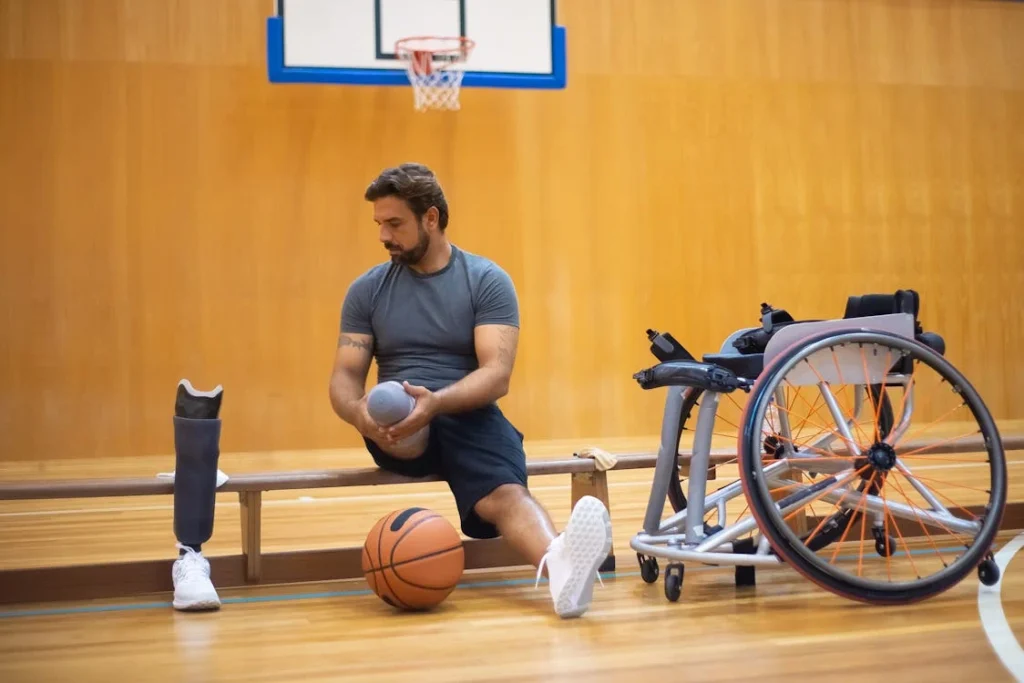
Practical Strategies to Reduce Swelling in the Residual Limb
Compression: Your Most Powerful Tool
One of the best ways to reduce swelling is by applying compression. After surgery, your doctor or rehab specialist will likely give you a compression dressing or garment.
These are specially designed to apply gentle, even pressure around your residual limb.
Compression does two important things. First, it helps keep excess fluid from building up. Second, it helps shape your residual limb into a smoother, more even form — which makes it easier to fit your prosthetic later.
Without this shaping, the limb can become bulbous or irregular, making prosthetic fitting harder and sometimes painful.
In the early stages, your care team might use soft dressings like elastic bandages. As healing progresses, you may be given a shrinker — a tight elastic sleeve that slides over your limb.
It should feel snug, but not painful. If it feels too tight or causes numbness, let your provider know. Good compression helps; poor compression can cause harm.
Wearing your compression garment regularly is key. It’s not enough to wear it “every now and then.” It needs to become part of your daily routine.
Most people wear it all day and only remove it for bathing or as advised by their medical team.
Keep your garment clean, dry, and in good condition. Wash it gently by hand when needed, and avoid stretching it out. A well-fitting garment works better and keeps your skin healthier too.
Elevation: Let Gravity Help You
Another easy but effective way to reduce swelling is elevation. When your limb is lower than the rest of your body — like when you’re sitting with your leg down or lying flat — fluid naturally moves downward and collects in the residual limb.
That’s when you start feeling pressure or puffiness.
By raising the limb above the level of your heart, you allow gravity to help drain that fluid away. Elevation is especially useful in the first few weeks after surgery when swelling is most active.
You don’t need to build a tower of pillows to do this. Just make sure when you’re lying down or resting, your limb is supported and slightly higher than your chest.
You can use a few firm pillows or a specially designed wedge. Don’t let your limb dangle at the end of a bed or chair. That just encourages more fluid to settle.
Try to elevate several times a day, especially after walking or standing. Even 20 minutes of elevation can help reduce pressure and give you relief.
Gentle Movement and Exercise
It may seem like moving around would make swelling worse, but the opposite is true — gentle movement actually helps your body clear fluid.
Remember the lymphatic system we talked about earlier? It depends on muscle movement to keep fluid flowing. That’s why light exercises, even when done sitting or lying down, can help reduce swelling.
Early on, your physical therapist will show you range of motion exercises. These help you move your joints without straining the surgical site.
You might start with ankle pumps, leg lifts, or arm circles — depending on your level of amputation. These movements get the muscles contracting and the fluid moving.
Even breathing deeply can help. Your diaphragm (the muscle under your lungs) creates pressure changes in your body that encourage lymph flow. So slow, deep breathing isn’t just calming — it also supports healing.
As you heal, walking and using your prosthetic also become tools to manage swelling. The key is to start slow and build up gradually.
Let your body guide you. If you feel more swollen after an activity, rest and elevate. If things feel better, keep going — slowly and steadily.
Massage and Skin Stimulation
Light massage can also help reduce swelling, especially when guided by a therapist trained in manual lymph drainage (MLD). This is a special kind of massage that helps the body move fluid through the lymph system.
Even at home, simple touch and stimulation can make a difference. Gently rubbing or tapping around the residual limb (after it’s fully healed) helps “wake up” the nerves and improve circulation.
Always check with your doctor before starting any kind of massage, especially if your wound is still fresh or sensitive.
Moisturizing your skin with a gentle lotion during massage can also prevent dryness and cracking — which keeps the skin healthy and lowers the risk of infection.
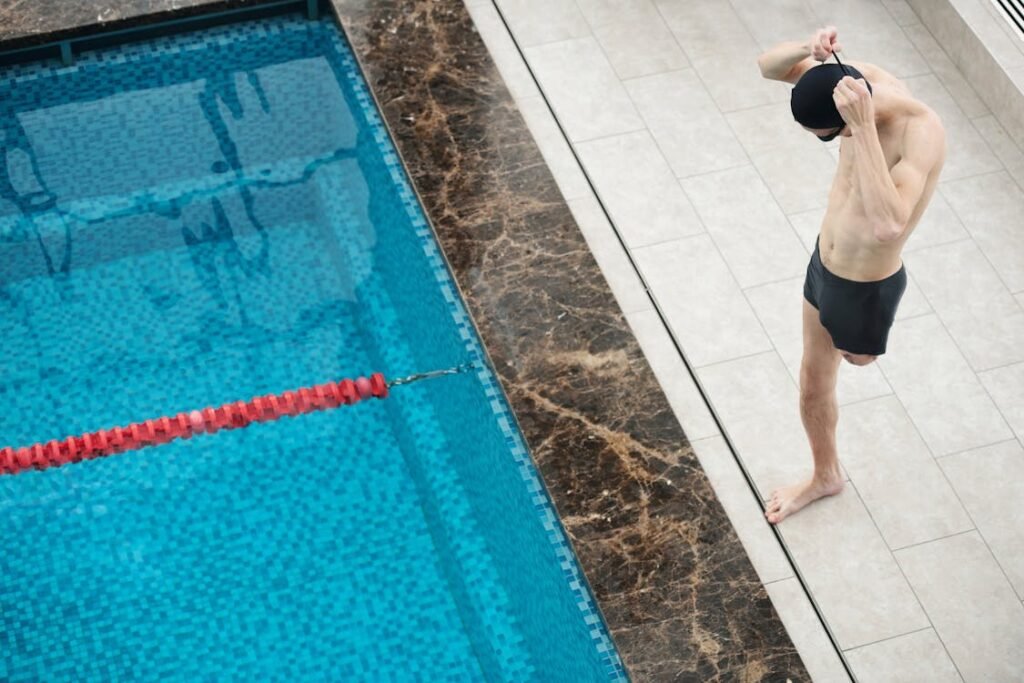
Preventing Complications from Swelling
Knowing When Swelling is a Warning Sign
Not all swelling is safe. While it’s normal to have some puffiness after surgery, there are times when swelling becomes a red flag. That’s why it’s important to stay in tune with your body and notice any changes that feel out of the ordinary.
If the swelling comes on suddenly or gets worse very quickly, that’s a sign you should call your doctor. Especially if it’s accompanied by warmth, redness, throbbing pain, or fluid leaking from the surgical site.
These could be signs of an infection or a blood clot, and both need medical attention right away.
A swollen residual limb that turns pale, cool, or numb may also signal poor circulation. This is rare, but serious, and it can slow healing or damage the tissue.
The bottom line: if something doesn’t feel right, don’t wait. It’s better to get checked and be safe.
Even a dull, aching kind of swelling — if it sticks around too long — can cause problems. Over time, chronic swelling puts pressure on the skin and nerves.
That can lead to skin breakdown, blisters, or even open sores. If you’re using a prosthetic, swelling can also cause your limb to rub or fit poorly, leading to pain or injury.
By staying alert and acting early, you can prevent most of these issues. Swelling isn’t something to fear — it’s something to manage, day by day.
Staying Consistent With Care
One of the biggest keys to reducing swelling long-term is consistency. That means sticking to your daily habits, even when things start feeling better.
Many people stop using compression garments too early or stop elevating their limb once the swelling improves. But often, swelling returns. It may not be as intense, but it can still slow your progress.
Think of your routine as maintenance — not just treatment. Even if you feel fine today, the care you give your limb now will help keep it strong, healthy, and ready for whatever comes next.
Keep wearing your compression sock or shrinker as recommended. Keep doing your exercises, even the small ones.
Keep elevating when you rest. These actions are like brushing your teeth — small things that protect you from bigger problems.
Consistency also means attending your follow-up appointments. Your medical team will check the shape of your limb, the condition of your skin, and how your body is responding to recovery.
They’ll help you adjust your routine based on what they see — because healing is not a one-size-fits-all journey.
Nutrition and Hydration Matter Too
What you eat and drink plays a quiet but powerful role in swelling and healing. Eating too much salty food can cause your body to retain water, which makes swelling worse.
Drinking too little water can slow down circulation and lymph flow.
Try to eat foods that help reduce inflammation. Think fruits, vegetables, whole grains, nuts, and lean proteins.
Stay away from overly processed snacks or heavy, salty meals. Your body is doing repair work — and it needs good fuel to do the job right.
Staying hydrated helps your body flush out extra fluid. Aim for enough water each day to keep your urine pale yellow.
If you’re unsure how much is enough, talk to your doctor — especially if you’re on medications or have kidney concerns.
Good nutrition isn’t about a perfect diet. It’s about giving your body what it needs to do what it already wants to do: heal.
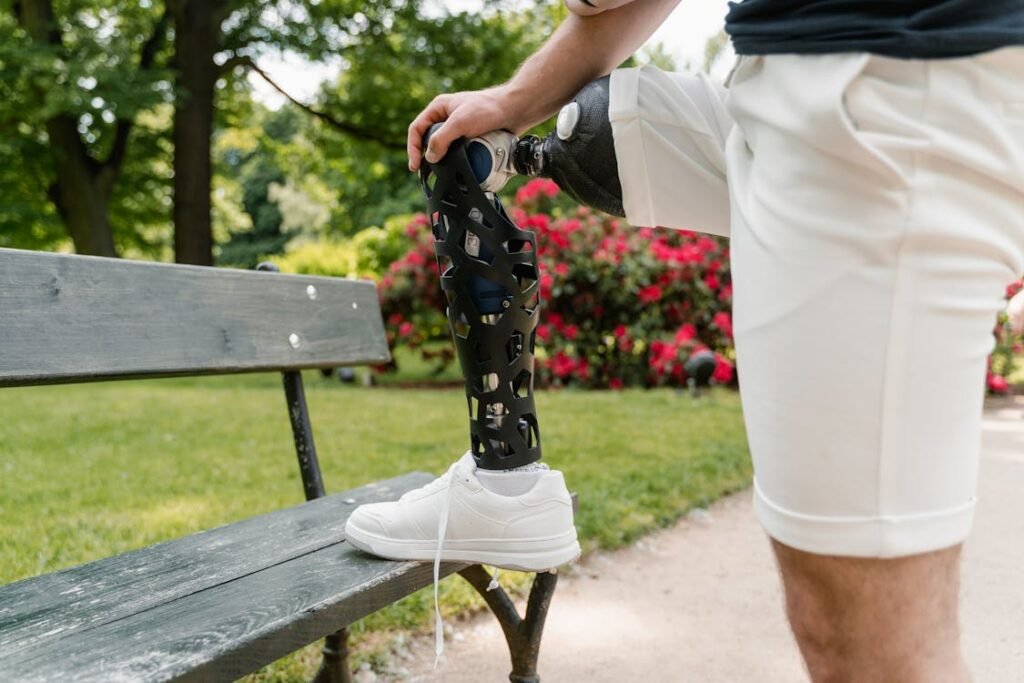
The Emotional Side of Swelling: What No One Talks About
When Swelling Feels Like a Setback
Swelling doesn’t just affect your body — it affects how you feel about your progress. One day your limb looks better, more defined, and you feel optimistic.
The next day, it’s swollen again, painful, or harder to move. This back-and-forth can feel like an emotional rollercoaster.
For many people, this physical swelling feels like failure. But it’s not. It’s simply part of how the body heals. Still, when your limb is swollen, it may delay your prosthetic fitting.
It might make you feel stuck, especially if you’ve been looking forward to walking again or using your arm more freely. That sense of delay can wear down your motivation.
You might begin to feel frustrated with your body — or even angry at it. You might think, “I’ve done everything right, so why is this still happening?”
These thoughts are common, and they can be heavy. But they’re also a signal that your emotional well-being needs just as much care as your limb.
The Mental Weight of “Invisible” Pain
Swelling is often accompanied by discomfort. Sometimes it’s a tight, aching pressure. Other times it’s a dull throb that comes and goes.
But because others can’t always see the swelling, they may not understand why you’re uncomfortable, moody, or tired.
This invisibility can make you feel isolated. You might even feel guilty for resting or canceling plans — especially when the people around you assume you’re “doing better.”
That’s why it’s important to give yourself permission to rest, even if others don’t see why you need it. Your body knows what it’s going through. You live in it every day. Trust that inner wisdom.
Swelling can also mess with your sleep. The discomfort may be worse at night, especially when lying flat. Lack of sleep makes everything feel harder — pain, mood, focus. It’s all connected.
If the mental strain builds up, talking to someone — a friend, counselor, or support group — can help take that pressure off your mind, just like compression takes pressure off your limb.
Rebuilding Motivation During Swelling Phases
During the swelling phase, it’s easy to feel like you’re not making progress. But you are — even when it doesn’t feel like it.
Healing isn’t always visible. Some of the most important recovery work is happening inside your tissues, blood vessels, and nerves. Your body is rewiring itself. That’s real progress, even if you can’t see it yet.
To stay motivated, try focusing on consistency over speed. Instead of asking, “How fast can I heal?” ask, “What small thing can I do today to help my healing?”
Maybe it’s wearing your shrinker sock for a few more hours. Maybe it’s elevating your limb while you listen to music or drink your morning tea. These small wins build up — not just physically, but mentally too.
Keeping a journal can also help. Write down how your limb feels each day, what helped the swelling, and how your mood was. Over time, you’ll see patterns. And you’ll also see progress you might’ve missed.
When you see swelling as part of healing — rather than a setback — it becomes something you can respond to with purpose, not fear. That shift in mindset can make all the difference.
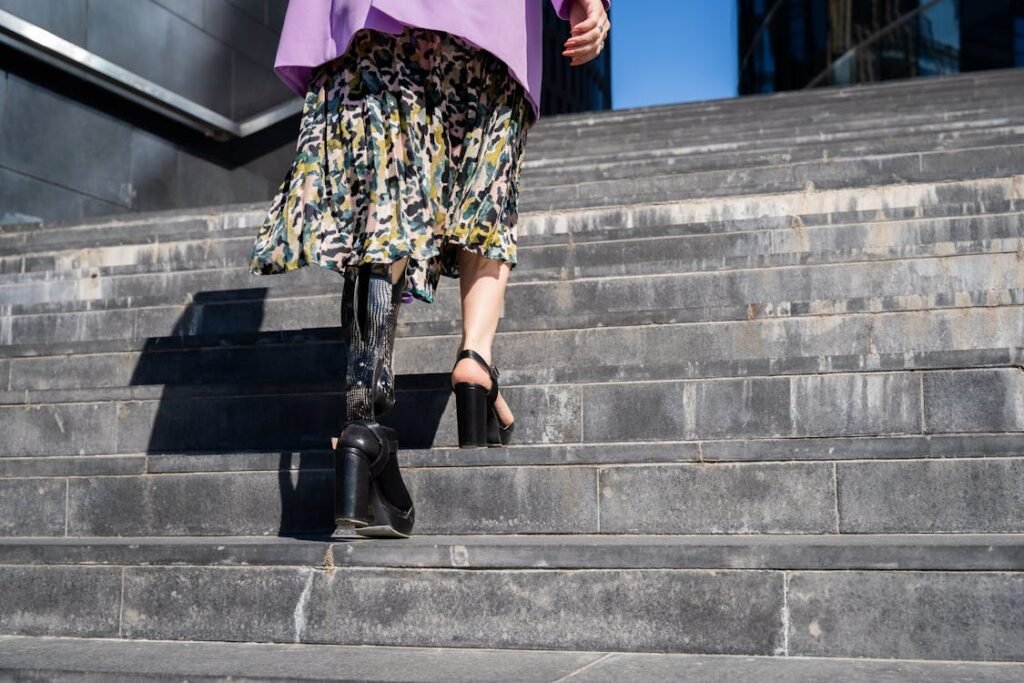
Looking Ahead: Staying Ahead of Swelling and Embracing Long-Term Recovery
Living With Confidence Beyond the Swelling Phase
As the weeks go by, swelling will no longer dominate your daily routine. It may still come and go, especially after long days on your feet or in extreme weather.
But by then, you’ll have the tools to manage it — and the confidence to do so without fear.
You’ll recognize how your body responds to activity, rest, and movement. You’ll know when to elevate, when to wear your compression garment a bit longer, and when to give your limb a break.
Swelling will go from being something that overwhelms you to something you handle with quiet, steady confidence.
This is where true independence begins — not when the swelling disappears, but when it no longer controls you.
As you transition into prosthetic use and everyday life, your awareness of swelling remains important. A slight change in your limb’s shape can affect the fit of your prosthetic.
Staying ahead of these changes by being proactive with your care ensures comfort, prevents injury, and supports long-term success.
Your relationship with your body will also evolve. You’ll become more in tune with its signals, more compassionate when it needs rest, and more empowered when it’s time to move.

Conclusion
Swelling in the residual limb may be one of the earliest and most frustrating parts of recovery after amputation — but it doesn’t have to define your healing. With patience, knowledge, and consistent care, it becomes just another step in your journey.
At Robobionics, we’ve stood beside countless individuals through this phase and beyond. We’ve seen how small habits — compression, elevation, movement, and mindset — lead to lasting strength. We’ve also seen how setbacks, when met with courage, create some of the most powerful comebacks.
So take your time. Be gentle with yourself. And remember, the road ahead isn’t just about reducing swelling — it’s about rediscovering your rhythm, your freedom, and your life.
You’re not just healing a limb. You’re becoming whole again — in a new, resilient way.
And you’re not alone. We’re with you, every step of the way.




In this blog, practical tips are shared to effectively reduce swelling in the residual limb after surgery very helpful and clear.